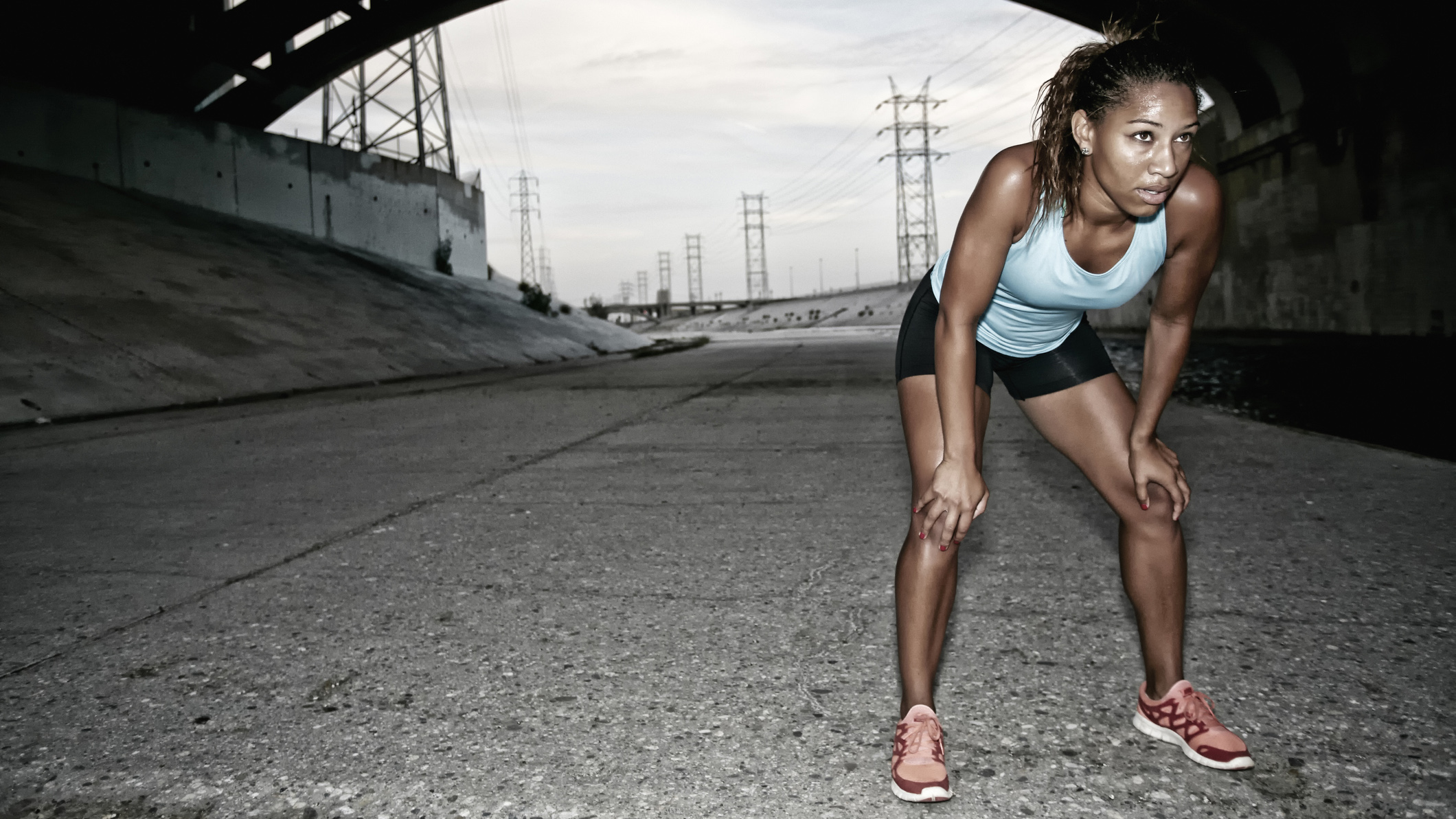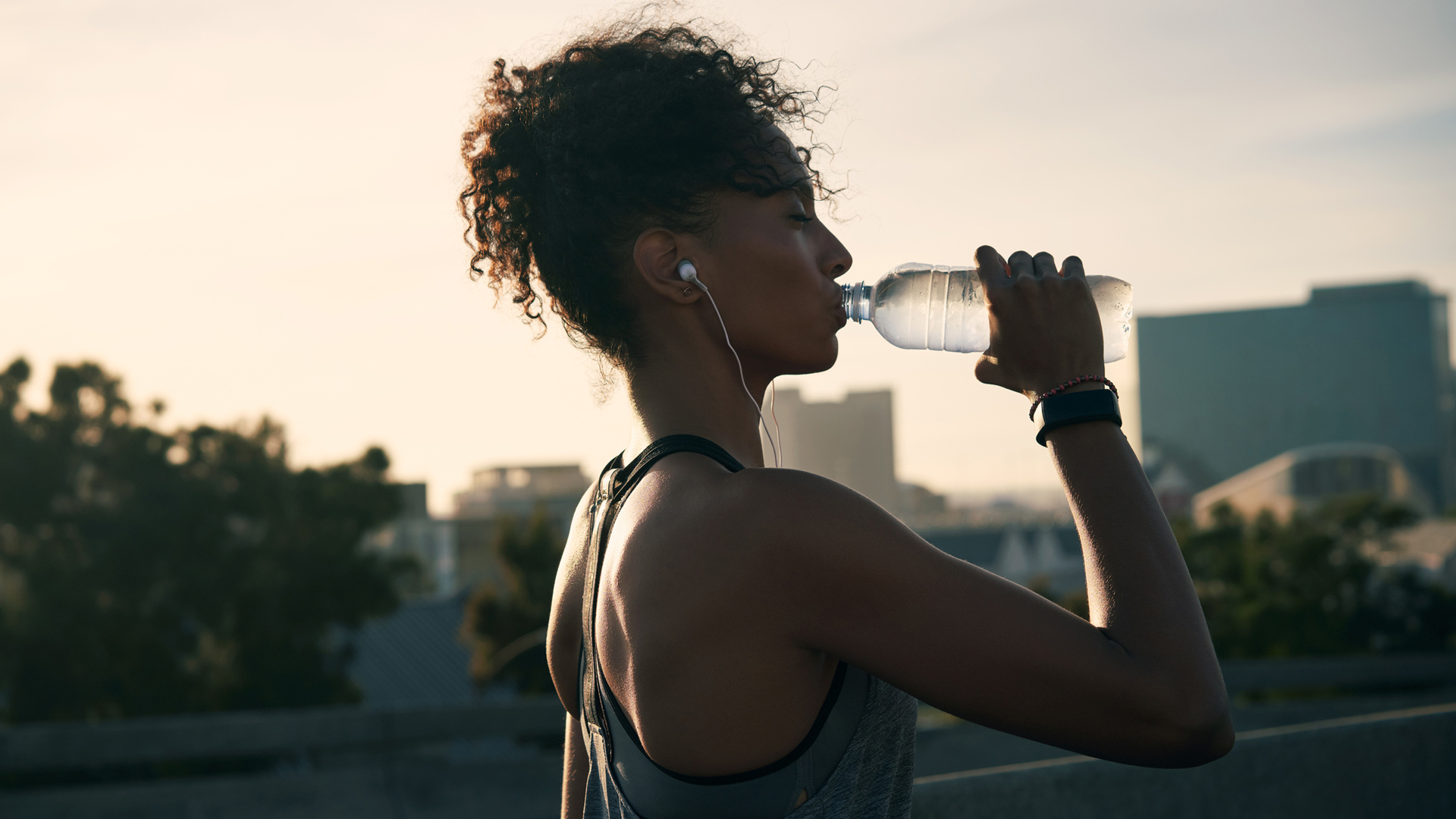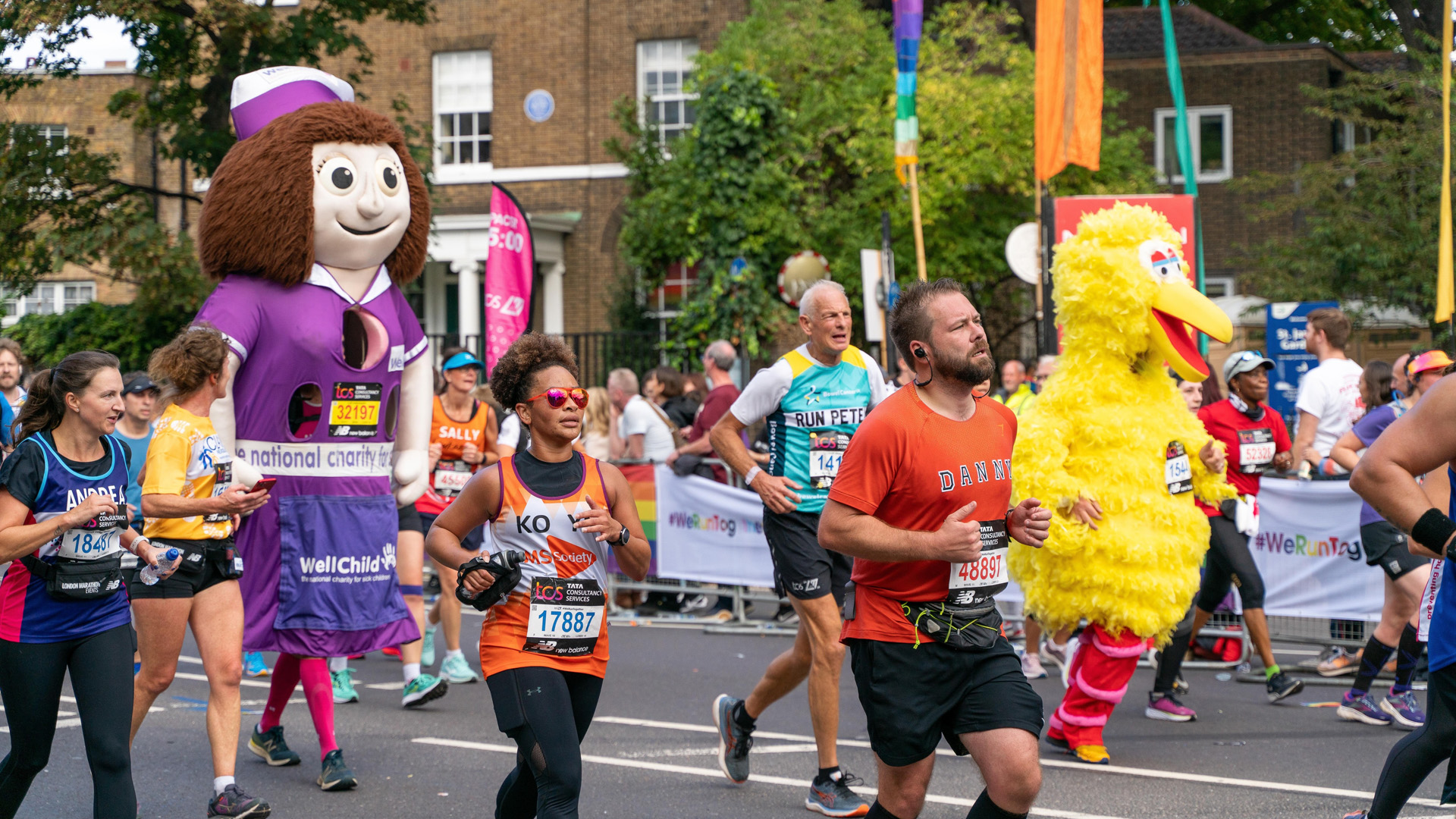11 things I learned from my not-so-stellar London Marathon debut
I tried (and failed) to beat my marathon PB at my first London Marathon – here's what I'd do differently next time


Looking at the weather app on my phone the night before in a small hotel room in London, I was somewhat anxious to run the London Marathon 2022. It was supposed to rain all morning on the day of the race, which was pretty much the only thing I wanted to avoid experiencing. After completing the race, I realised that quite a few other things prevented me from running a PB or even a good time; here are 11 things I learned/would do differently next time.
It all started well. On the day of the race, as I walked to the assembly point, I felt ready: my legs were fresh, my mind was clear, and I was raring to go. The first 10k went by without any issues, and I was looking forward to finishing the race in 3 hours and 20 minutes, which would have been a marathon PB for me. I crossed the halfway point at 1 hour and 40 minutes, so right on point.
Things swiftly fell apart after that point. I went through all my jelly babies by then, expecting to get some more fuel on the way, but lost all of them not long after 25k. I knew there wasn't any help coming my way until the next gel station, which was miles away. And my tendons and hips started to give in pretty badly, too.
From then on, every minute was a struggle. I ended up walking into every mile to ease the pain in my hips, and struggled to convince my body that I had to keep running (jogging, at that point) to finish the race. People cheered and tried to get me running, but the pain was pulsating in my legs, and I thought about forfeiting the race at every ambulance station for the last 15k.
It was at Blackfriars, with around two miles to go, where I was in a tunnel, walking, trying to stretch my legs when I decided that I had to keep running. I could slow down, but I had to keep running for the rest of the race; otherwise, I might not be able to run again. And although every step felt like someone was stabbing my legs with a knife, I trotted along and finished the race in 3:54 – over half an hour slower than anticipated.
I have no regrets about undertaking the marathon, but there are many things I would (will, even) do differently next time, as explained below. If you're planning on running the London Marathon for the first time as I did, I recommend reading through the tips below, so, hopefully, you will have a much more pleasant experience on the day.

1. Gear matters
This might sound obvious, but what you're running in matters a lot. I ran in one of the best running shoes – the New Balance Fuelcell RC Elite V2 (retailer link) – and also wore many of New Balance's marathon gear to ensure the wrong clothing/shoes won't slow me down on the race. I saw people tackling the race in daily trainers, such as the ASICS Gel-Nimbus 24, which are awesome shoes, but aren't designed for racing, as they won't give you enough propulsion when you need it the most.
Get all the latest news, reviews, deals and buying guides on gorgeous tech, home and active products from the T3 experts
Of course, many people wore carbon racers to the race, like the Nike Air Zoom Alphafly NEXT% 2 or the ASICS METASPEED SKY+, and some of these people were flying. That said, even the best running gear won't replace training, so don't count on the shoes carrying you over the finish line; you have to put the work in yourself. One more thing I'd recommend is a running watch – here are the best running watches and best triathlon watches if you need some inspiration on which one to get.
2. Respect the distance
The marathon is a gruelling distance. Looking at pros completing the 26.2 miles in a little over two hours might give you the impression that it's a walk in the park, but it really isn't. Any issues you might have with your form will be accentuated, and any niggles you feel will be exacerbated. You can't assume you'll be able to run the entire distance based on your 10-15k pace; you need to put the work in and train for the full distance.

3. Do your long runs
When I say you need to train for the full distance, I don't mean you need to run the full distance before the race, but long runs are a must. For various reasons (i.e. buying/moving house, holiday, etc.), I missed out on key training sessions where I was supposed to run 15k+, and I felt this on the day. Long runs are the cornerstones of your marathon training; you can skip shorter runs here and there if you must, but you must do your steady runs to ensure your body is familiar with running for longer periods of time.
4. Scout the location/check the map
Established mass participation events such as the London Marathon are very well-organised, which means you can study the map way ahead of time. I'd recommend checking the course before the race in person (if you can) for things such as elevation, what the area is like, speedbumps on the road etc. You can also check the elevation gradient on the map itself, and thanks to software such as Google Maps, you can also scout the location remotely.
5. Study the course/aid stations
Another thing you can check on the map provided by the organisers is the aid stations. At the London Marathon, there were water stations almost every mile, and there were also Lucozade stations and even Lucozade gel stations along the course. Knowing where these are can help you plan your fuelling strategy more efficiently and, most importantly, help you carry less stuff with you when you run.

6. There will be plenty of water/gels/etc. along the route
Although I knew there were many aid stations along the way, I overprepared myself for the race. Or, more like, I carried too much stuff with me for no reason. Or even more like, the wrong stuff. Do you need 10,000 gels if there are multiple gel stations along the way? Do you need a water bottle with an isotonic drink in it if there are isotonic drink stations on the course? No, and if you plan accordingly, you can avoid the hassle of carrying all this stuff with you for 20+miles.
7. Have a contingency plan
My plan was to keep chowing down on jelly babies as I ran and stuffed my pockets full of them accordingly. I lost half of my stock as I was getting ready for the race, and the rest was hardly enough for the first 15k. Then, as it happens, I picked up two gels from the stations and put them in the rear pocket of my shorts, but both fell out almost immediately, along with the caffeine sachet I had in there for when sh*t hits the fan around the 30k marker.
What I didn't plan was what I would do if this happened. I didn't need all those jelly babies – many people were handing out sweets/fruits/etc. Along the course – and instead, I should've kept the gels in secure pockets. I saw people stuffing gels and even their phones in their running sleeves, which is a great idea: it's secure and easily accessible when you need it.
Think through: is there anyone you can call to drop some gels off along the route? Have you got at least one bit of emergency caffeine/gel on you? It's better to be safe than sorry when running a marathon.

8. It will hurt
If you aren't walking the marathon, it's safe to assume you're running at a slightly challenging pace; and if that's the case, your body will start hurting before you cross the finish line. There is nothing you can do apart from getting ready mentally that at some point, the pain will come, and you will have to be stronger mentally than your physical pain.
I struggled for the last 10 or so miles, and only with two miles to go, I overcame the pain by telling myself that the sooner I got to the finish line, the sooner the pain would stop. And sure enough, the pain stayed with me for the rest of the race, but I didn't stop, no matter how hard my body tried to convince my brain that it didn't want to go on.
One thing that could've helped is if I stretched more, not just on the day when I actually did, but during the training. My muscles feel fine even now, a day after the race, but my tendons are killing me. My terrible hip mobility also contributed to feeling terrible on the day. Do yourself a favour and strecth more often.
9. Plan the whole day/weekend – not just the race
I don't live in London, so it took me over five hours to get home after the race had finished. We also had to travel to London the day before to pick the bib up, so we stayed at a lovely little hotel Saturday night. We had to book parking and work out how we would get from the hotel to the race and how we would get back from the race to the car, then home.
The London Marathon weekend is hectic in London, with many people trying to get to and from the race locations; on this occasion, there was also a rail strike the day before, further complicating journey planning. If you can, map out your movements for the whole race weekend, not just the race. This includes booking hotel rooms, parking, checking the distances between key areas of the race, and, most importantly, where your supporters will be located along the course.
10. Tell your friends and family you'll be there
It was amazing to see a familiar face now and then in the crowd. I knew where people who came to support me would be, so I spent a couple of miles leading up to those points scanning the crowd, which helped me keep going and forget about the pain. If I had enough friends and family with me on the day, I would've put someone at each mile!
There are spectators at the London Marathon, so if people are coming to see you, discuss where they will be and on which side of the course. The best option is for them to be around the blue line marking the best route along the course; this can be on the other side of a very wide road, so planning ahead is a good idea.
Signs can also come in handy – if they are waving something big with a familiar pattern/picture on it, it's much easier to spot people in the crowd. My favourite signs were the ones with the picture of the participant's head blown up to A3/A2 size stuck on a pole; I could definitely spot those.

11. Have your name on your top – at the front!
You can still get the crowd to cheer you on, even if no one's with you on the day, by having your name written on the front of your t-shirt or vest. Everyone was calling out names in the crowd as runners went past, saying things like, "You're smashing it, Becky" or "Amazing pace, Tim!" I wore just a normal t-shirt – big mistake!
+1 Dress up (you'll get even more support from the crowd)
Want to go the extra mile? Dress up. The biggest cheers from the crowd were aimed at people who wore fancy dress costumes: pine trees, minions, angels; you name it. My favourite runner was a little star, quite literally, taking up the whole upper body of the runner. I can't imagine anything worse than running a marathon in a full-body costume, but even if 'just' you paint your hair in vibrant colour, wear a fancy hat, or put on smaller accessories, it can help you stand out from the crowd and get the attention of thousands of people along the course.

Matt Kollat is a journalist and content creator who works for T3.com and its magazine counterpart as an Active Editor. His areas of expertise include wearables, drones, fitness equipment, nutrition and outdoor gear. He joined T3 in 2019. His byline appears in several publications, including Techradar and Fit&Well, and more. Matt also collaborated with other content creators (e.g. Garage Gym Reviews) and judged many awards, such as the European Specialist Sports Nutrition Alliance's ESSNawards. When he isn't working out, running or cycling, you'll find him roaming the countryside and trying out new podcasting and content creation equipment.